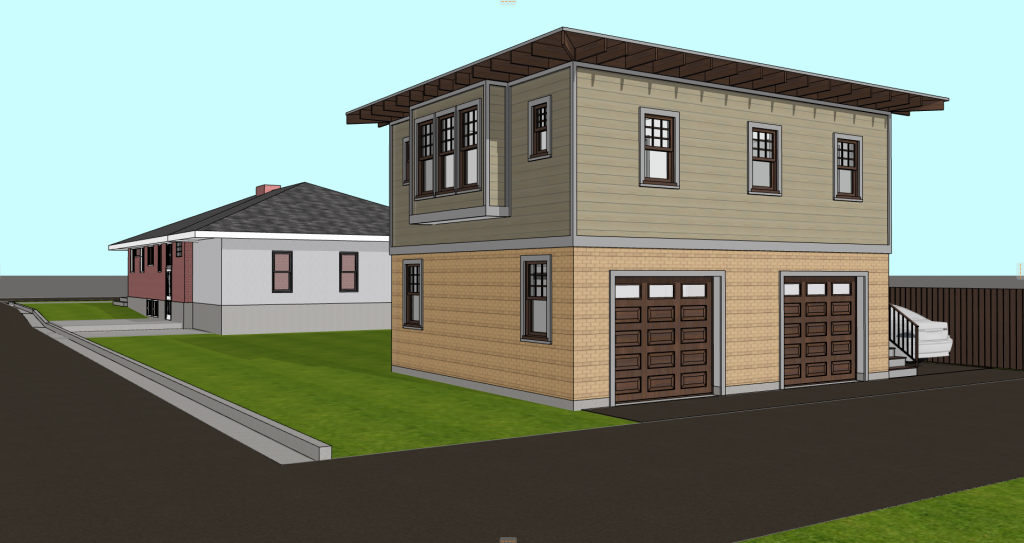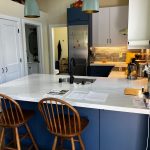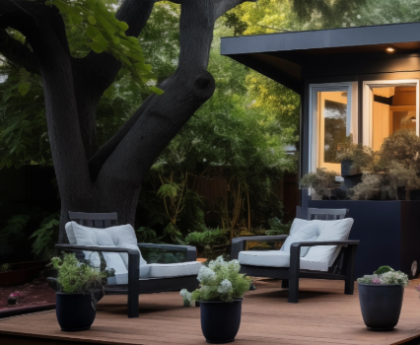Sign up to get free Building Salt Lake emails in your inbox. Building Salt Lake Pro and Premium Members can search for any building permit in Salt Lake City. Stay in the know in the market by becoming a Member today.
Salt Lake City homeowners are rushing to get permits to build accessory dwelling units at an unprecedented rate following changes the City Council made in April.
That’s despite the difficult and uncertain financial landscape that has quickly emerged in the months following the changes. Building Salt Lake spoke with multiple homeowners who have plans and permission to build ADUs, but who will hold off until the cost of financing comes down.
Still, the response is an early indication that homeowners are ready and willing to add housing onto their properties after the city cleared several regulatory hurdles and design restrictions that had been standing in the way.
In the five months following changes that broadly liberalized the capital city’s rules for ADUs, more people have requested building permits for another home on a single lot than during any full calendar year before the changes.
“It does appear that the changes that were proposed by the planning division and later adopted by the city council have led to an increase in the total number of permits for ADUs,” Nick Norris, Salt Lake City’s chief planner, told us.
A Building Salt Lake preliminary analysis found that since the City Council voted in late April to make it easier to obtain a permit to build an ADU, property owners or their representatives have requested permits to build 50 new homes.
That’s compared to 27 requests for ADUs in all of 2021, the last year that complete data is available from the city. In 2020, when financing costs were nearing all-time lows, property owners made a total of 34 requests for ADUs, either through a building permit or a conditional use permit.
Several people told Building Salt Lake they were looking to build an ADU to create affordable housing for family members.
The city is now on pace to nearly triple the production of ADUs moving forward thanks to a suite of changes that came after some contentious debate earlier this year.
The City Council voted to allow ADUs by right, meaning without needing to spend the time and money for permission from the Planning Commission. ADUs can now be bigger and taller, regardless of the size of the existing home on the lot. Off-street parking is easily waived if the property is near transit or bike lanes, an exemption that applies to much of the city thanks to a growing bike network.
Multiple homeowners who have applied for a building permit told us they did so as a result of the changes, with several saying they were doing so to create affordable housing for family members.
“I’m building an ADU behind my brother’s house in Sugar House,” said one homeowner, who asked not to be named because they were working with the city on the plans and were afraid of unspecified repercussions. “The relaxation of the codes lets me build something bigger. Instead of 500 square feet I’m building at 800 square feet.”
The city previously capped the size of an ADU at no more than 50 percent of the size of the existing home on the property. That left the owners of smaller homes with no option but to build a smaller ADU, even if they had the means to build larger.
The new rules allow ADUs up to 1,000 square feet regardless of the size of the primary structure. Property owners can also build ADUs closer to their property lines.
Almost as soon as the City Council made its vote, property owners began filing for building permits to build ADUs under the new rules.
Nisha Harman is looking for a permit to build a two-bedroom, one-bathroom home in Poplar Grove. The plan is to create a space for a relative with a disability to live near family while keeping housing costs affordable.
“The plan is to go through Kong Shed. It’s going to be 720 square feet, 24 x 30,” Harman said. “For the base building, with a slab on grade cement, it’s going to be $45,000.”
That’s before things like upgrading the sewer line and hiring contractors to finish the new home, which will be significant expenses given the high cost of labor and materials in Salt Lake City.
While Harman said the city’s changes were a “huge difference” in her plans to build an ADU, her ambitions to add to the city’s housing stock might be hampered by the financial landscape that brought nearly all development in Salt Lake City to a screeching halt this year.
“Because interest rates are so high, in order to make the payment $800 a month, which is what she can afford, it’s like $90,000,” Harman said. “That’s not that much money to do it.”
Interest rates have skyrocketed from a low of 2.65 percent in January 2021 to 7.63 percent this week, according to the Federal Reserve.
Still, homeowners in every City Council district have shown a desire to build ADUs after the city’s changes, which follows a trend seen in other cities and states. When local restrictions around the design, size, height and general overall appearance of ADUs is relaxed, property owners are willing to add housing onto their lots.
Fabricio Laboriel, a real estate investor who lives in Liberty Wells whose neighbor is building an over-the-garage ADU, said he doesn’t plan to move ahead with a two-bedroom ADU above a garage at his home.
“The market is too volatile right now and I decided to wait,” Laboriel said.
Not every homeowner wanted to speak on the record about their process adding another housing unit to their property.
Multiple people said they found the city’s process burdensome to their goal of adding housing.
Clayton Morgan said via email he’s looking to build a one-bedroom home for a family member to occupy in the back of his home in Yalecrest, which was a neighborhood that was vehemently opposed to allowing moderate income housing within its boundaries.
“The current process, although streamlined from when I applied, is burdensome but better than not allowing ADUs at all,” Morgan said.
It does appear the city has been struggling to keep up with the rush of applications. The majority of applicants are waiting for multiple city departments to review their submissions before they can make adjustments to plans or obtain a permit and begin to build.
Several residents have applied for a permit but haven’t provided the city with adequate information to move forward with the project, according to city records.
The early indication shows that the city’s changes have made a positive effect on spurring the intention to create housing, though financing remains a major hurdle.
The one roadblock that remains is that the owner of a property that has an ADU on it or a relative must live in either the ADU or the main home.
We’ll know more after a couple years of full and official data whether the city should look at removing the requirement.
Sign up to get free Building Salt Lake emails in your inbox.Building Salt Lake Pro and Premium Members can search for any building permit in Salt Lake City. Stay in the know in the market by becoming a Member today.



